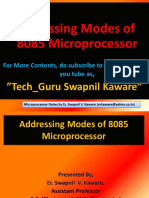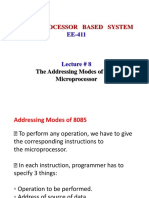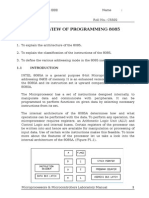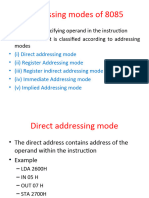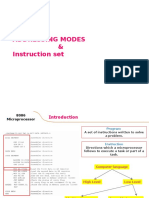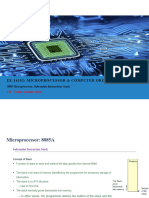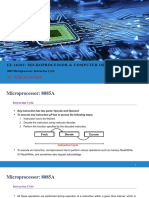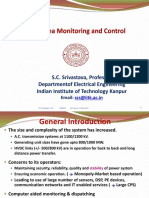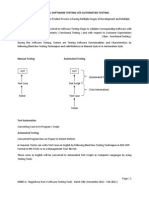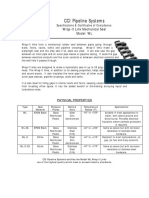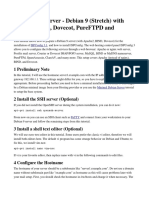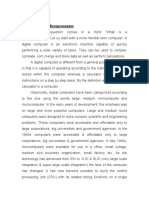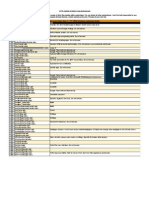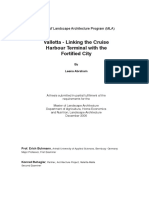0% found this document useful (0 votes)
51 views12 pagesLecture Addressing Modes of Instruction
The document discusses the different addressing modes of the 8085 microprocessor instruction set, including register, direct, register indirect, immediate, and implied addressing modes. It provides examples and explanations of each addressing mode.
Uploaded by
Vishal GaurCopyright
© © All Rights Reserved
We take content rights seriously. If you suspect this is your content, claim it here.
Available Formats
Download as PPTX, PDF, TXT or read online on Scribd
0% found this document useful (0 votes)
51 views12 pagesLecture Addressing Modes of Instruction
The document discusses the different addressing modes of the 8085 microprocessor instruction set, including register, direct, register indirect, immediate, and implied addressing modes. It provides examples and explanations of each addressing mode.
Uploaded by
Vishal GaurCopyright
© © All Rights Reserved
We take content rights seriously. If you suspect this is your content, claim it here.
Available Formats
Download as PPTX, PDF, TXT or read online on Scribd
/ 12













